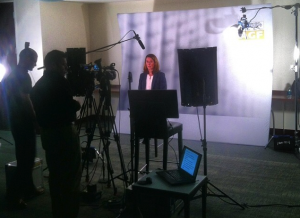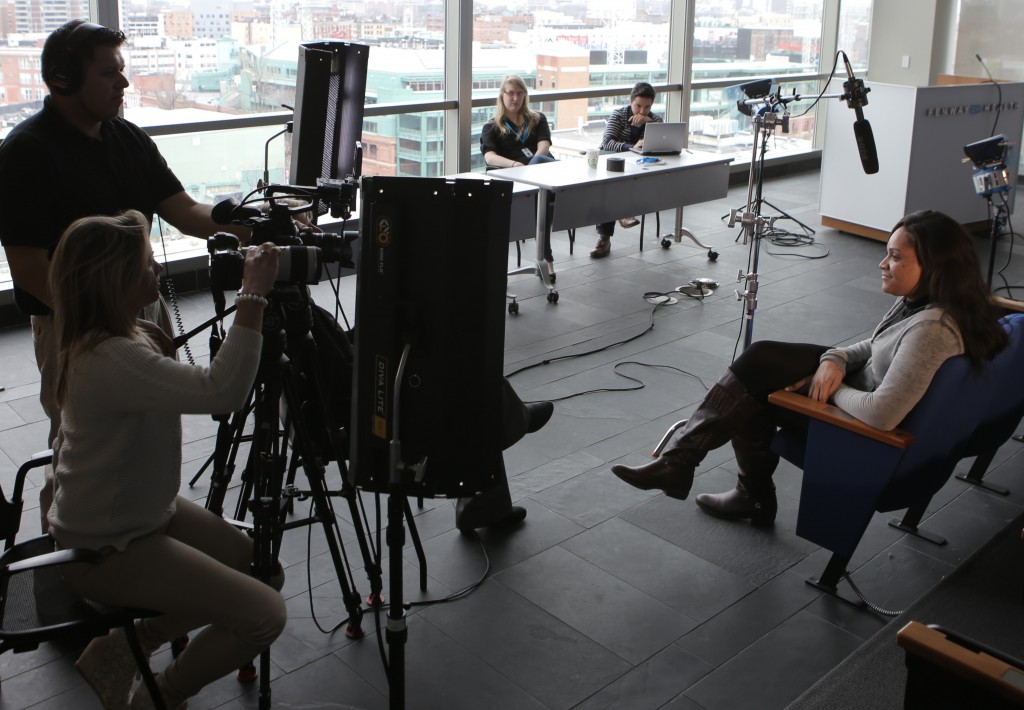 McElroy Films is a video production company that films interviews for a variety of their clients, including non-profits, schools, corporations, and organizations. Each client has a story to tell and a message relay to an audience so taking the time to understand whom you are filming and who your client is talking to should be first and foremost. Engaging an intended audience through video requires planning. McElroy Films has compiled a list of tips and techniques that may seem obvious but both the client and vendor often overlook. Go the extra mile and try out a few of these tips and techniques that will leave a lasting impression with your client.
McElroy Films is a video production company that films interviews for a variety of their clients, including non-profits, schools, corporations, and organizations. Each client has a story to tell and a message relay to an audience so taking the time to understand whom you are filming and who your client is talking to should be first and foremost. Engaging an intended audience through video requires planning. McElroy Films has compiled a list of tips and techniques that may seem obvious but both the client and vendor often overlook. Go the extra mile and try out a few of these tips and techniques that will leave a lasting impression with your client.
1.Location: Scouting the filming location is key, especially if the client is working with a limited budget or number of interview subjects. Access to multiple filming locations or backdrops will make the subtle difference between your client’s videos looking manufactured instead of interesting and professional.
2. Lighting: Lighting a set can be tricky because of the various factors that need to be considered, especially when filming on-location instead of in-studio. The time of day/duration of filming, location, and lighting setup should be selected and scouted before the shoot. Depending on the budget, hiring an experienced gaffer that understands all facets of lighting will save time and money, particularly during post-production. For corporate interviews, a three-point lighting scheme should work…just don’t forget to bring extra bulbs and a pair of gloves!
3. Camera Setup: Interviews are typically framed for medium shots (MS), medium close-ups (MCU), or a wide-shot, (WS) depending on the style of the interview. For stylistic shots, try framing close-up shots of the subject. A traditional interview setup places the interviewee and interviewer diagonally from each other so that the interviewee does not speak directly too the camera, which can make the client’s interview message feel contrived and or forceful to the audience. Have the producer or interviewer sit to the side of the camera’s and at eye-level with the subject.
4. Audio: Audio can make or break a video. Bring a variety of mics, batteries, sound blankets, and cords because when it comes to audio, you can never be to prepared…wardrobe incompatibilities, weather, and location can throw audio curve balls. For interviews, the lavaliere mics are ideal because the mic has a short pickup and is omnidirectional, which means the mic picks up noises from every direction. A shot gun mic should be setup to record room tone and is suitable for recording audience questions or commentary.
5. Wardrobe: Provide your client with a list of suggested attire in advance so that they have time to find the right outfits. Your client should bring AT LEAST 4 to 5 different outfits to set. Need more specifics? Come to set with at least 2 different suiting blazers and several dress shirts. Avoid wearing whites, greens (especially for green screen shoots), stripes, fluorescent colors, bold patterns, graphic prints, and clothing that shakes, rattles, or rocks because the lav mic will pick up the sound and compromise the sound clarity.
6. Makeup: Command the set. Show you’re confident and capable. Satisfy the client by coming prepared with a basic makeup kit that contains a roll of paper towel, makeup remover wipes, hairspray, combs, a mirror, disposable makeup applicators, and various shades of translucent pressed powder. Understandably, applying makeup to a stranger’s face can be awkward but powdering your client’s t-zone before rolling is a standard practice that should not be avoided. For quality content, your interview subject should feel comfortable and confident enough to speak open and honestly. These subtle touches will relax whoever is in the hot seat… sitting under the lights can make can anyone sweat and feel self-conscious so powder the forehead, temple, nose, chin, and any other shiny spots ahead of time.
For more information contact us at info@mcelroyfilms.com or call 718 229 5900.


